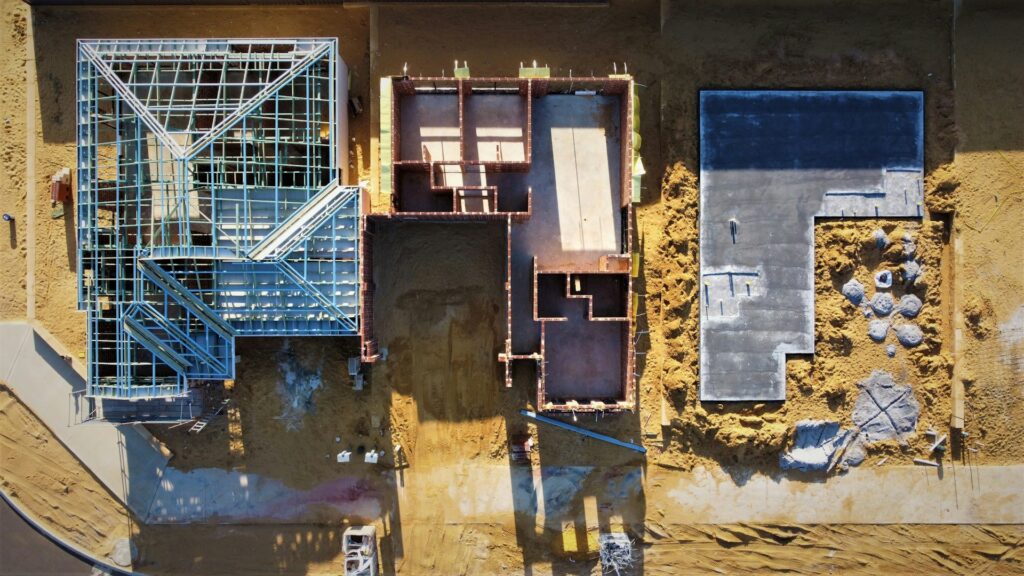Your Lifelong Home
Your body (and mind) is your home forever and you built it. That’s not metaphorical, it’s a biological fact. This is the place you will inhabit your entire life. Whilst you can upsize or downsize your physical home, as your needs change, you can’t switch your body; you built it from your first breath and will own it until your last. And its build will almost certainly determine the length and quality of your life. So how sound is it? Time for a structural survey.
Before you make your largest life investment, the purchase of your home, you get a structural survey to ensure you understand its condition and the extent of any issues that need attention. You then live in it and cherish it, to ensure it looks its best, meets your needs and maintains its value. How does that compare with the body (and mind) you live in?
Your body (and mind) need as much, if not greater TLC. Look in the mirror and picture your body as your home. What maintenance is needed to maximise your comfort and joy for the next 30 plus years?
A hierarchy of needs
This analogy of your body (and mind) depicted as your home, links to Abraham Maslow, who proposed a psychological theory of human need, depicted as a pyramid, with five levels, the most basic at the bottom was about survival, building to an apex of growth and fulfilment.
Your home needs deep foundations, solid walls, large windows, characterful décor and a leakproof roof, equally your body needs quality nutrition, frequent physical exercise, regular social connections, cognitive challenges and sufficient regular sleep.
The Foundations: Nutrition
A home’s underlying strength is determined by its foundations. Shallow or weak foundations make it unstable and liable to collapse. Equally, deep or reinforced foundations provide stability and resilience.
For the body nutrition performs the same critical role. Without food and water, we die and with the right quality and quantity we thrive. Nutrition fuels every cell: building muscle, regenerating tissues, fuelling the brain and supporting the immune system.
Today, the biggest nutritional challenge is over consumption, especially of processed foods and sugar, and too little of the right foods, such as fruits and vegetables. Here’s some UK stats: –
- Over 1 in 4 adults obese
- 1 in 5 adults have either Type 2 diabetes or are pre-diabetic
- Over 50% of our daily energy comes from ultra-processed foods
- There are over 30,000 alcohol related deaths
- 69% of adults do not eat 5 vegetables or fruit per day
Obesity and alcohol specific deaths are at record highs and nutrition is the leading cause of death and disability in the UK, read more here.
The Walls: Physical health
The walls provide the structure. Solid bricks and mortar ensure the home is safe and comfortable. Inferior materials risk cracks, bulges and damp. Without regular maintenance, minor and easy to repair damage can quickly become more serious.
In this analogy, the bricks and mortar equate to your muscles, skeleton and cardiovascular system. Regular physical exercise, including resistance, cardio and balance help build and strengthen our muscles, bones, joints and cardiovascular system. Without regular exercise, we are prone to age-related muscle loss (sarcopenia), osteoporosis, fractures and general frailty. In the UK, falls are the leading cause of lost independence with one in three over 65 falling at least once each year.
Physical inactivity is linked to higher risk of mortality, diabetes, cardiovascular disease, and osteoporosis. See UK Chief Medical Officers’ Guidelines and read this on the determinants of bone health.
The Windows: Social Connectivity
The windows let in the light and connect us to with the outside world, both with nature and the community. The larger and cleaner the windows, the more the home engages with these sight and sounds. Equally, fewer smaller windows, or those obscured by curtains, dirt or overgrown shrubs, the more isolated and gloomier the home.
In this analogy, the windows are our social connectivity. We need to retain our interest and curiosity in the world around us. We also need someone to confide in. These are nurtured through social connections and the depth of relationships we form.
Humans are social animals. The more we engage, the more love and belonging we feel in return and the more emotional energy boost we receive. Cleaning the windows and removing the shrubs is equivalent to connecting with others and really listening and showing genuine curiosity. Equally, opening the windows to let fresh air flood in, is like sharing our feelings and building relationships of trust.
A study based on 458,000 participants in the UK Biobank over 12 years showed that each social connection was independently associated with lower all-cause mortality and those who were isolated had 63% higher risk of cardiovascular mortality.
The Décor: Cognitive health
The décor, both its style, colour, and upkeep define our personality. We can often tell a lot about a person when we peek inside their home. TV programmes, such as Through the Keyhole, whose catch phrase was “Who lives in a home like this?” invited us to guess whose home we were visiting.
This is a perfect analogy for our cognitive health. It defines who we are and our mental wellbeing. The healthiest minds are constantly learning yet are calm. We need a balance of challenge and mental resilience. We also need real purpose to get up every morning and stay focused.
To look at its best, the décor must be regularly cleaned and refreshed. Equally, our brain needs regular stimulation. Too little weakens the cortex connections and smoking, or alcohol significantly increase the risk of dementia. Also, the décor needs a theme to bring it together, which equates to our purpose.
The decor is invariably the first to show wear and tear and can be an early warning of greater potential damage, if left unchecked. Equally, continuous stress and anxiety are the first signs of poor cognitive health and should be addressed quickly.
A strong sense of purpose is significantly associated with lower all-cause mortality.
The Roof: Sleep
Without a roof, the fabric of the home will be damaged by the elements. Equally, unchecked, broken or missing roof tiles cause steady leaks and insidious damage. The roof protects everything else.
That’s the critical role of sleep. To be at our best, it’s essential we get the right amount every night. Sleep restores our bodies and minds and without any, over a sustained period, we would die.
Too little sleep can impact on our metabolism, immune function, emotional regulation, and memory. It’s also a major cause of overeating. Long-term sleep deprivation is linked to dementia, cardiovascular disease, and premature death. Equally, too much may be indicative of other health problems, including heart disease, diabetes and depression. In fact, one of the biggest causes of excess mortality is extended, poor-quality sleep.
The House that You Built
Our body, our home, cannot be upsized or downsized when it is no longer suitable – and will almost certainly determine the duration and quality of our life. Just as Maslow created a hierarchy of needs, our body, as a home, has a hierarchy of needs to last the ravages of time. Whilst we think nothing to invest in our physical home, we may forget to invest in our lifetime home.
The next time you look in the mirror, ask yourself: “Am I maintaining my body with the same love, money, and attention I’d give a house I plan to live in forever?’ If the answer is no, then it’s time to get to work, because that’s exactly where you’ll be living.





